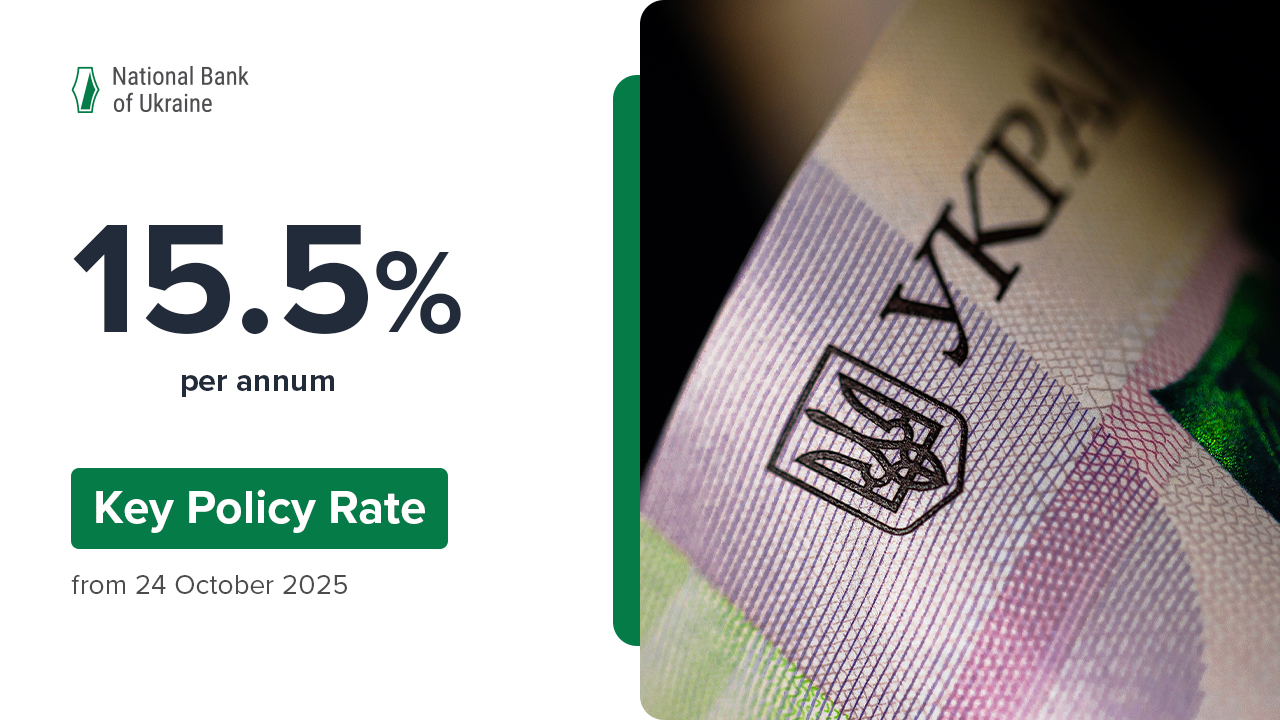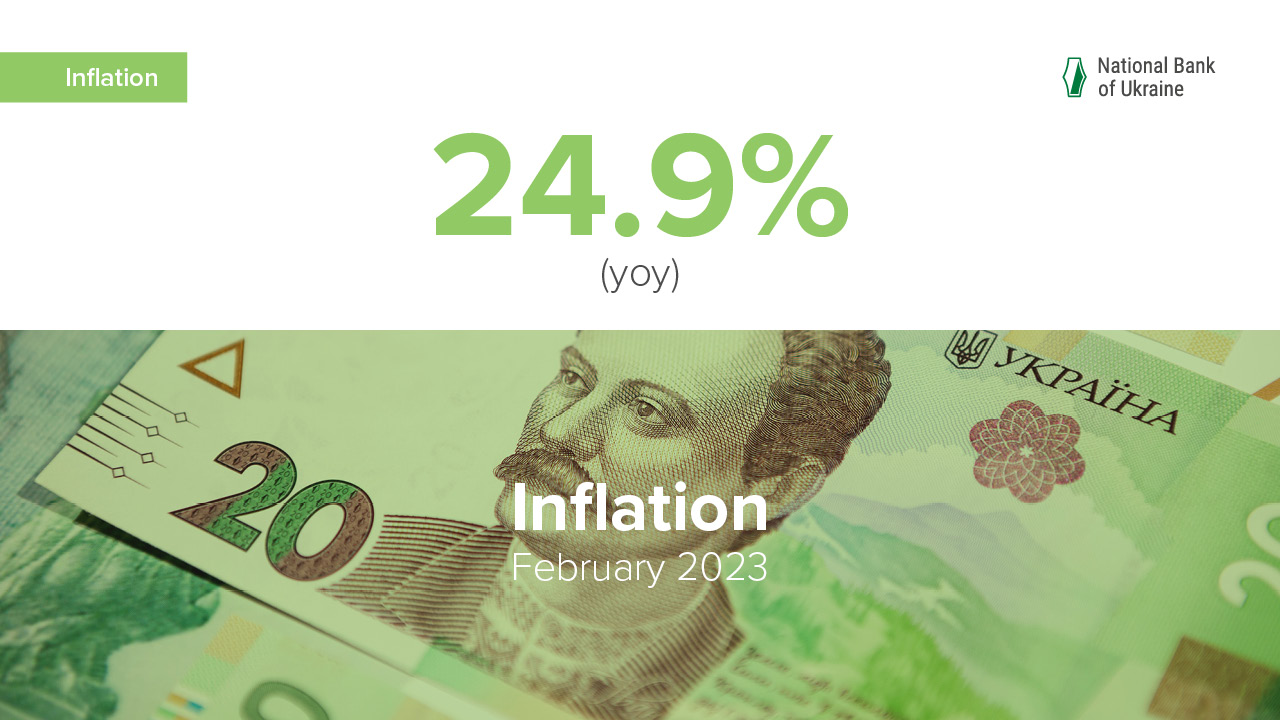In February 2023, consumer inflation continued to decline in annual terms, reaching 24.9% (down from 26.0% in January). In monthly terms, prices grew by 0.7%. This is according to data published by the State Statistics Service of Ukraine.
The actual rates of price growth were below the trajectory of the NBU’s forecast published in the January 2023 Inflation Report, due to larger-than-expected supply of foods and fuel as well as the improved state of the energy sector. Inflation was also restrained by an improvement in inflation expectations and favorable conditions in the cash segment of the FX market – among other things, thanks to measures taken by the NBU. These factors neutralized the effects from higher business costs, particularly those incurred to ensure business continuity amid power outages.
Core inflation slowed to 22.7% yoy in February, down from 23.2% yoy in January
The rise in the prices of processed foods decelerated significantly (to 27.8% yoy), primarily thanks to the stabilization of the energy sector and a decrease in business costs. Prices for bread, flour products, nonalcoholic beverages, and canned food grew more slowly. On the back of improved energy sector conditions and lower export prices, growth in prices slowed for dairy products and sunflower oil. The strengthening of the hryvnia in the cash segment of the FX market put the brakes on the rise in imported goods prices.
Nonfood products grew in price practically at the same rate as in the previous month (22.2% yoy). The increase in the prices of these goods was restrained by more upbeat inflation expectations, including due to favorable conditions in the cash segment of the FX market as well as due to consumer demand being weak and unevenly distributed by goods and regions. Prices for certain personal care products, electronics, pharmaceuticals, furniture, and cars rose more slowly. In contrast, price growth accelerated for household goods and clothing and footwear, reflecting higher costs businesses incurred in previous months to ensure energy autonomy.
The growth in services prices also remained almost unchanged (15.6% yoy). Services of travel agencies, restaurants, hotels, and cinemas rose in price more slowly, which can be explained both by weaker demand and by the improvement in energy supply. On the other hand, the prices of medical, insurance, veterinary, and telecommunication services grew at a higher rate, spurred by increased costs. The rise in the prices of services provided by electricians and plumbers also accelerated on the back of the sustained high demand due to the effects of power outages.
The growth in raw food prices slowed to 38.0% yoy
The prices of flour and cereals rose at a lower rate due to better-than-expected harvests. Growth in meat prices decelerated thanks to lower feed prices and weak demand. Lower import prices restrained the increase in prices of citrus fruits. The de-occupation of a part of Kherson oblast last year and the subsequent restoration of supplies to the region also restrained growth in the prices of raw foods.
At the same time, prices for vegetables, in particular onions, carrots and greenhouse vegetables, grew at a higher rate due to a decrease in supply as a result of a weak harvest. The rise in prices for greenhouse vegetables was also driven by an increase in business costs in the previous months due to electricity shortages and the consequences of the earthquake in Turkey. In addition, egg prices grew more rapidly.
Growth in administered prices slowed to 14.4% yoy
Alcoholic beverages rose in price more slowly, influenced by weaker demand and sufficient import supply. The growth in prices for transportation services slowed down as well thanks to the stabilization of fuel prices. The moratorium on raising utility prices for households also restrained the increase in administered prices. In contrast, growth in prices for tobacco products sped up as expected, due to the scheduled increase in excise taxes.
Growth rates of fuel prices decreased markedly, to 42.0% yoy
This was primarily due to a decline in global crude oil prices in annual terms. Decreased electricity shortages, lower demand for fuel, including due to warm weather, and the stockpiling of fuel by households and businesses, also had a significant impact.
Inflation has been slowing for the second month in a row. The decline in inflation started earlier and was faster than predicted in the NBU's January forecast. At the same time, the risks of rising inflationary pressures remain, given the high security risks and the temporary nature of some of the factors that caused inflation to deviate from the forecast.
In order to minimize the risks and ensure steady disinflation, the NBU is keeping the key policy rate at 25% and taking additional measures to increase the attractiveness of hryvnia assets and to maintain exchange rate stability.








